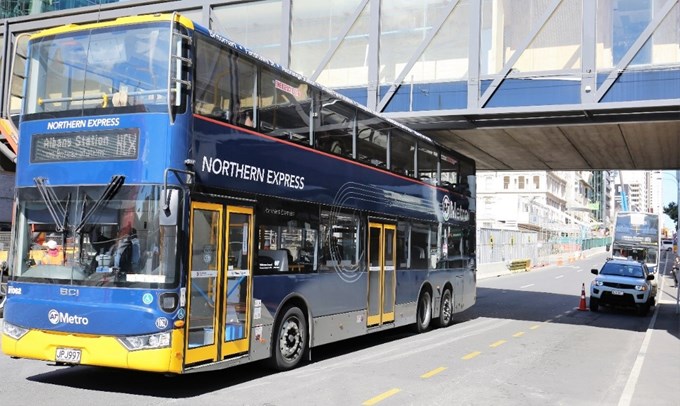March is the busiest time of the year on Auckland’s roads, public transport and cycleways.
There are lots of ways you can get around the city and make your commute easier.
You can download the AT Mobile smartphone app to plan your public transport journey and even track the location on your bus in real time.
During peak hours, trains on the Eastern, Western and Southern Lines run every 10 minutes, and they all run six-car sets which can hold up to 900 people.
Northern Express buses travel into the city every three to five minutes during peak hours, and more than half of the people to travel across the Harbour Bridge do it on a bus.
If you haven’t tried carpooling, you can use the Smart Travel app, which helps you find people nearby who you can travel with. There is also priority parking for carpooling vehicles at various Park and Ride facilities, as well as within several downtown carparks.
February is Auckland Bike Challenge month, so what better time to get out and enjoy the new cycleways around the city, and the carrying capacity of a protected cycleway is 4500 people per hour.
Consider changing when you travel where possible and help spread the peak. On some routes you can save yourself 20 minutes travel time by leaving 30 minutes later – check out AT’s travel time savings calculator to explore this further.
What AT is doing to help
To help deal with public transport’s busiest time of the year, known as “March Madness”, an extra 4600 seats will be added to bus services per day.
Over the past 18 months new bus networks have been rolled out in Auckland’s south, west and east, which provide those areas with the capacity needed in even the busiest of months.
Later this year, new networks will be implemented in the central and north suburbs.
“Auckland Transport has a plan to ensure that we can cope with the increased numbers of customers using public transport in late February and March,” says Mark Lambert, Chief Transport Services Officer.
“We know the number of public transport passengers peaks in March as students head back to their studies, schools are in term and lower numbers of people are on leave. It’s known as “March Madness” and like last year we will be adding extra spaces on key routes.
“I’m confident we have sufficient capacity but we will be monitoring key routes throughout the period and adding capacity where it is needed.
“This year we have built on the work we did last March and we have at least matched last year’s extra seats and in some cases added to it. We will have 99 double deckers operating on various routes over the next few weeks which will help with demand.
“We are confident our customers will be able to get on services but there may be some queuing, some people will have to stand and in some cases the first bus might be full.”
Network numbers
- On trains, additional capacity of 1,200 spaces in the morning peak was added last year which means that there is still some capacity available, although some services will be very busy. During peak, all services on the Western, Eastern and Southern Lines are six-car sets.
- An additional 10 double decker buses from 12 February and will be operating until mid- April under the Explorer brand, which is an additional 3000 more seats per day compared to standard timetable.
- The Airporter route 380 service between Manukau / Airport / Onehunga was doubled in frequency from December 2017.
- In the past year we have added 2.6 kms of bus lanes and we have also extended bus and transit lane hours on five key corridors.
- Last year the East New Network increase peak services by 59 percent and the West New Network increased peak services by 69 percent.
- The 881 service has changed to a limited stop service and is promoted a as ‘University Express’. This means there are 700 more seats than a year ago.
- Around Auckland, cycling counts continue to grow, in 2017 there were 3.67 million bike trips recorded by the city’s 28 cycle counters. The carrying capacity of a protected cycleway is 4500 people per hour, and 5.2 kms of cycleways have been added to the regional cycle network since July 2017.
- Overall there were 91.1 million public transport boardings for the 12 months to December 2017, an increase of 7.4 percent, or 6.3 million boardings, on the 12 months to December 2016.
- During December the median travel speed during the morning peak was 43km/hr compared to 41 km/hr in November.


